Today the Traveler gets started before dawn. It's going to be a long hike, and he wants an early start.
He's kind of gotten the idea in his head that all of Connecticut is just fancy houses with well trimmed yards
. Well, it looks like Bridgeport is the exception. As he approaches the city, he starts passing the scrappy liquor shops and corner stores and ugly boxy buildings that tells him he's approaching a city with a ghetto feel.
And then... it gets worse. An industrial complex of some sort, completely abandoned... broken windows... crumbling buildings. Looks like a perfect set for a Robocop movie... not fenced in very well, looks like an easy place to hide all sorts of criminal activity.
But it's what he finds next that really takes him by surprise. On the other side, right across the street, is a row of houses. The first house or two are abandoned and falling down... the one's right next to it look like they were just remodeled!
.... I mean how do you sell a place like this? Who would want to live right next to scary looking industrial ruins?
But people are living here
. It's a neighborhood that's very much alive with many people taking pride keeping their homes looking decent.
This is the paradox of a place like Bridgeport: for many folks (particularly African Americans) this place is a "trap". When the city started to decay, others were able to move away to nicer suburbs... but they were stuck here, seeing crime go up and quality of life go down.
However, for immigrants from places like Honduras and Colombia, this place is a "gateway"... a place where they can find a reasonably cheap place to live, access to public transportation and jobs... and a shot a living the American dream. Sure there's crime and urban decay... but it's still a hell lot safer than many of the places that they've come from. Eventually many of these immigrants will save up enough money to move on to a better life...
He stops in for a bite to eat at a Colombian run eatery. He translates for an African American lady who is trying to buy coffee from the cashier who can't speak a lick of English!
The Traveler finds this amusing
. The customer might not feel the same way though...
Bruce, who he visited in Milford yesterday, understands this area well. He explained what happened here.
"When the freeway was built through Bridgeport, it hurt these people in two ways: first, it allowed the wealthier residents to move away because they could commute to the city--leading to urban decay. Secondly, the freeway cut through the poorest neighborhoods. The people who were displaced were moved into high rise "projects". You cram a lot of frustrated, stressed out people together and you're going to have a very bad situation on your hands. Finally, decades later, the projects were shut down and people were moved into more diverse, multi-income areas."
He went on to explain, "some of that land that fell into disuse because of these destroyed neighborhoods has been a huge boon for some companies. Did you see the Bass Pro Shop right along the freeway? Kind of odd to have an outdoorsmen superstore right in the middle of a once decayed urban area
. The company didn't have to pay a penny to build it. It was all a government grant because they were "developing" a decayed area."
There's something deeply disturbing about this. The Traveler needs to go back a do some more reading on this... so he does.
Back in the 1930s through a process called "Redlining", certain neighborhoods were deliberately kept poor. People and businesses couldn't get loans in these neighborhoods. Services weren't developed. These were the neighborhoods where mainly African Americans lived. Home values went down instead of up as they usually do. So even if an African American worked really hard to save up and buy a house, he would find that over time his house was worth less and less.
And then, the cruel blow: A freeway or a shopping mall would be proposed for the the city. Where do you think it would be built? In the "Redlined" areas of course! Because, the government or the developer would only have to pay the assessed value of these properties--then they could force they people to move away
. And it would be conveniently determined that these properties were worth very little. So the hard working African American who saved up and bought a house would be forced to give it up... for pennies on the dollar.
It's sickening when you get to thinking about it.
So while white folks in places like Milford, Stratford, etc etc watch their property value go up and up and find themselves wealthier and wealthier. African Americans in Bridgeport see the opposite happening. And this doesn't just affect them. It affects their children and grandchildren on to future generations. There's no inheritance to pass on to the kids to help them get a head start. And many folks in these neighborhoods have pretty much decided to quite trying... since the system seems to be working against them anyways.... and they pass on this attitude on to their kids.
The Traveler thinks of this as he walks through the neighborhoods of Bridgeport
. Suddenly a glimmer of hope catches his eye: it's a private school, right in the middle of the ghetto, with African American kids wearing smart uniforms, heading inside, being greeted by the teachers at the door one by one...
The Traveler observes for a moment. Deep within, he really wants to believe that the children of this neighborhood can believe that the “American Dream” can apply to them. He wants to believe that, as they struggle to catch up with their white neighbors in the suburbs, they system will help them out rather than betray them once again. He wants to believe that, in spite of the past, the American Dream can work for everyone...
He finally reaches downtown Bridgeport, which is right in the middle of a makeover. Some buildings have been redone completely... with abandoned buildings right next door. Looks like in a couple of years, this is could be a really nice downtown area. Whether this will improve the quality of life of those in neighborhoods around
... that remains to be seen.
Right next to the massive I-95 freeway barreling overhead, is an architectural masterpiece: the Barnum Museum is a blend of all sorts of architectural styles. Wikipedia says it includes Byzantine, Islamic, Romanesque and Gothic styles... The Traveler sees more of the gothic himself.
Anyways, glad to see something was spared from the destruction caused by I-95...
He crosses under the freeway. Just a few patches of neighborhoods here, cut off from the city. A big chunk of the land has been turned into a baseball stadium. He wonders how much the people who lost their houses here got compensated...
He crosses back to the north side of the freeway... through some more run down neighborhoods. One street catches his eye: "Iranistan" He decides to read up on it later.
Turns out, it's because C.T. Barnum (same guy who comissioned the Barnum museum--and started the Barnum and Bailey Circus), also comissioned an oriental-styled palace on this street... back in the days when Americans thought of the Middle East as a place of palaces and exotic tales...
Barnum even would have an elephant plowing the fields in front of his palace, just to draw attention. He was definitely one of Bridgeport's most interesting characters.
Postvisit: The Cause of Urban Decay
Thursday, May 12, 2016
 Bridgeport, Connecticut, United States
Bridgeport, Connecticut, United States
Other Entries
-
792134. A Troubled Valley
Apr 2814 days prior Lekhoa, Lesothophoto_camera63videocam 0comment 0
Lekhoa, Lesothophoto_camera63videocam 0comment 0 -
802135. Lesotho's Only City
Apr 2913 days prior Maseru, Lesothophoto_camera10videocam 0comment 0
Maseru, Lesothophoto_camera10videocam 0comment 0 -
812136. Another South African near-disaster
Apr 2913 days prior Bloemfontein, South Africaphoto_camera0videocam 0comment 0
Bloemfontein, South Africaphoto_camera0videocam 0comment 0 -
822137. Finally being a Tourist
Apr 3012 days prior Ezulwini, Swazilandphoto_camera29videocam 0comment 0
Ezulwini, Swazilandphoto_camera29videocam 0comment 0 -
83The Cultural Village
May 0111 days prior Ezulwini, Swazilandphoto_camera68videocam 0comment 0
Ezulwini, Swazilandphoto_camera68videocam 0comment 0 -
842138. My Hiking Safari
May 0210 days prior Lobamba, Swazilandphoto_camera80videocam 0comment 0
Lobamba, Swazilandphoto_camera80videocam 0comment 0 -
852139. A Stop at the Baha'i Center
May 039 days prior Mbabane, Swazilandphoto_camera15videocam 0comment 0
Mbabane, Swazilandphoto_camera15videocam 0comment 0 -
862140. A Pleasant Urban Tour
May 048 days prior Manzini, Swazilandphoto_camera7videocam 0comment 0
Manzini, Swazilandphoto_camera7videocam 0comment 0 -
872142. Fertile Farmland
May 048 days prior Malkerns, Swazilandphoto_camera5videocam 0comment 0
Malkerns, Swazilandphoto_camera5videocam 0comment 0 -
882143. One Last Cool Discovery
May 048 days prior Mahlanya, Swazilandphoto_camera31videocam 0comment 0
Mahlanya, Swazilandphoto_camera31videocam 0comment 0 -
892141. University Campus
May 048 days prior Luyengo, Swazilandphoto_camera5videocam 0comment 0
Luyengo, Swazilandphoto_camera5videocam 0comment 0 -
90Postvisit: Reflections on my Journey
May 057 days prior Johannesburg, South Africaphoto_camera7videocam 0comment 0
Johannesburg, South Africaphoto_camera7videocam 0comment 0 -
912144. Another German Layover
May 066 days prior Raunheim, Germanyphoto_camera7videocam 0comment 0
Raunheim, Germanyphoto_camera7videocam 0comment 0 -
922145. Thank you Herr Opel
May 066 days prior Rüsselsheim am Main, Germanyphoto_camera38videocam 0comment 0
Rüsselsheim am Main, Germanyphoto_camera38videocam 0comment 0 -
93Invited into a Connecticut Home
May 111 day prior West Haven, United Statesphoto_camera14videocam 0comment 0
West Haven, United Statesphoto_camera14videocam 0comment 0 -
94Sort of a Castle
May 111 day prior Milford, United Statesphoto_camera13videocam 0comment 0
Milford, United Statesphoto_camera13videocam 0comment 0 -
95American Trains
May 111 day prior Stratford, United Statesphoto_camera6videocam 0comment 0
Stratford, United Statesphoto_camera6videocam 0comment 0 -
96Postvisit: The Cause of Urban Decay
May 12 Bridgeport, United Statesphoto_camera38videocam 0comment 0
Bridgeport, United Statesphoto_camera38videocam 0comment 0 -
97Laws in Colonial America
May 12later that day Fairfield, United Statesphoto_camera19videocam 0comment 0
Fairfield, United Statesphoto_camera19videocam 0comment 0 -
98The Russian Fiddler
May 12later that day Westport, United Statesphoto_camera10videocam 0comment 0
Westport, United Statesphoto_camera10videocam 0comment 0 -
99Grand Claims
May 12later that day Norwalk, United Statesphoto_camera13videocam 0comment 0
Norwalk, United Statesphoto_camera13videocam 0comment 0 -
100Crossing the Darien
May 12later that day Darien, United Statesphoto_camera6videocam 0comment 0
Darien, United Statesphoto_camera6videocam 0comment 0 -
101Connecticut Culture
May 131 day later Stamford, United Statesphoto_camera10videocam 0comment 0
Stamford, United Statesphoto_camera10videocam 0comment 0 -
102The End of the Connecticut Chapter
May 131 day later Greenwich, United Statesphoto_camera22videocam 0comment 0
Greenwich, United Statesphoto_camera22videocam 0comment 0 -
103The Most Beautiful Spot in the Northeast
Jul 1766 days later Benton, United Statesphoto_camera122videocam 0comment 0
Benton, United Statesphoto_camera122videocam 0comment 0 -
104A Middle Class Feel
Jul 2069 days later Hughesville, United Statesphoto_camera3videocam 0comment 0
Hughesville, United Statesphoto_camera3videocam 0comment 0 -
105The High School French Club Tragedy
Jul 2069 days later Montoursville, United Statesphoto_camera9videocam 0comment 0
Montoursville, United Statesphoto_camera9videocam 0comment 0 -
106The Sawdust War
Jul 2069 days later South Williamsport, United Statesphoto_camera10videocam 0comment 0
South Williamsport, United Statesphoto_camera10videocam 0comment 0 -
107On up the West Branch
Jul 2069 days later Somewhere in, Internationalphoto_camera1videocam 0comment 0
Somewhere in, Internationalphoto_camera1videocam 0comment 0 -
108Big City Troubles in a Small Town
Jul 2069 days later Lock Haven, United Statesphoto_camera7videocam 0comment 0
Lock Haven, United Statesphoto_camera7videocam 0comment 0 -
109Postvisit: The Town that got it Right
Jul 2473 days later Sunbury, United Statesphoto_camera13videocam 0comment 0
Sunbury, United Statesphoto_camera13videocam 0comment 0 -
110Back into Coal Country
Jul 2473 days later Snydersburg, United Statesphoto_camera13videocam 0comment 0
Snydersburg, United Statesphoto_camera13videocam 0comment 0 -
111Postvisit: A Town in Distress
Jul 2574 days later Shamokin, United Statesphoto_camera18videocam 0comment 0
Shamokin, United Statesphoto_camera18videocam 0comment 0 -
112Eastern European Immigrants
Jul 2574 days later Kulpmont, United Statesphoto_camera6videocam 0comment 0
Kulpmont, United Statesphoto_camera6videocam 0comment 0 -
113Off the Main Road
Jul 2574 days later Marion Heights, United Statesphoto_camera10videocam 0comment 0
Marion Heights, United Statesphoto_camera10videocam 0comment 0 -
114Post visit: A slightly more sophisticated town
Jul 2574 days later Mount Carmel, United Statesphoto_camera13videocam 0comment 0
Mount Carmel, United Statesphoto_camera13videocam 0comment 0

 Bridgeport, Connecticut, United States
Bridgeport, Connecticut, United States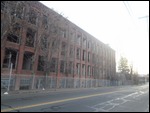

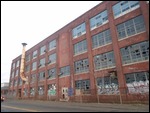
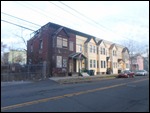
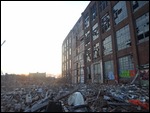
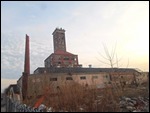
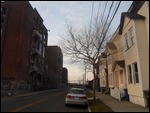






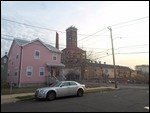
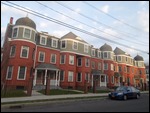
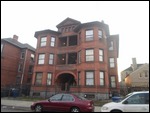
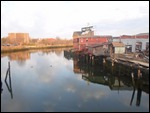
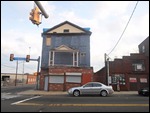

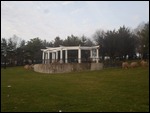


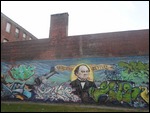
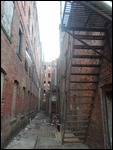
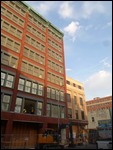
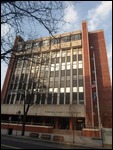
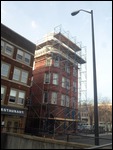
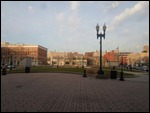
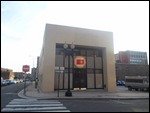
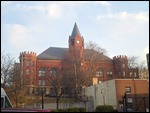
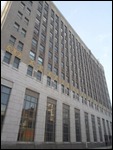
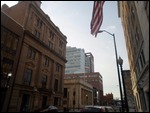
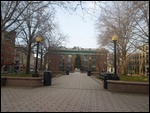
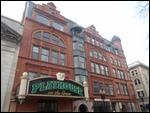
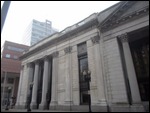
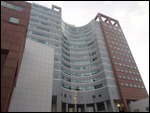

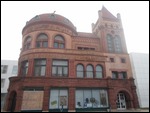
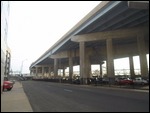
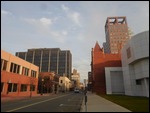
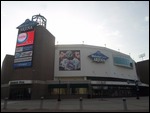
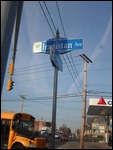
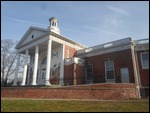
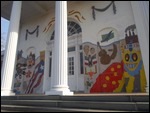
2025-05-23